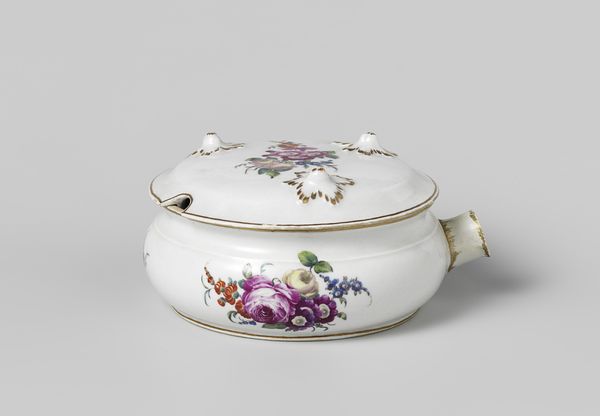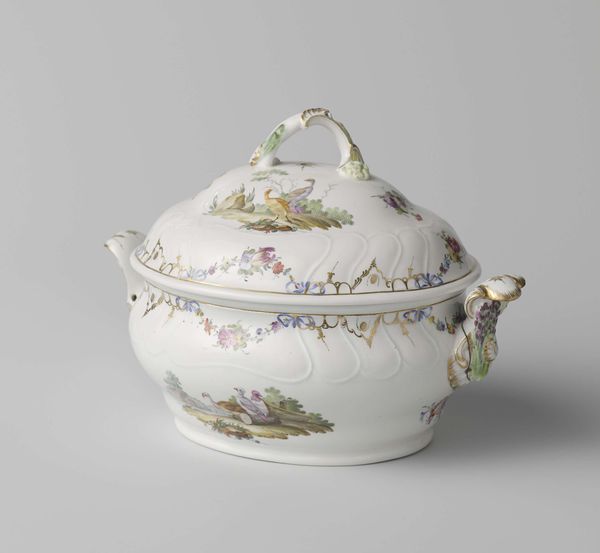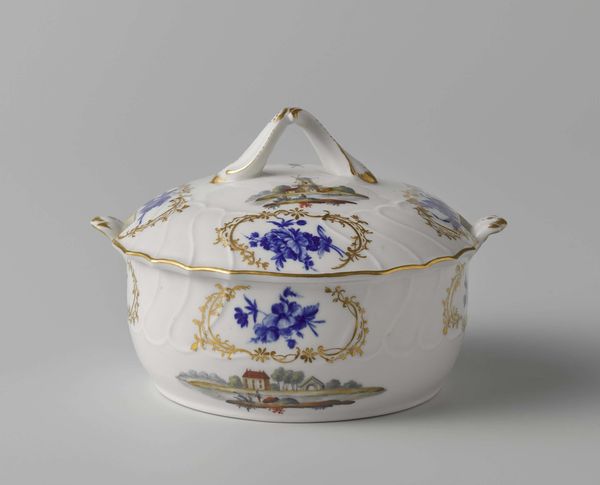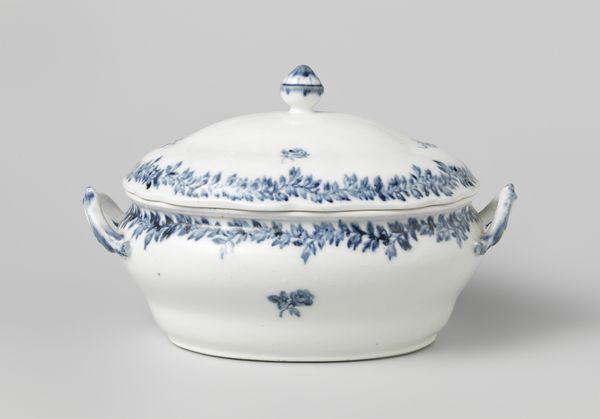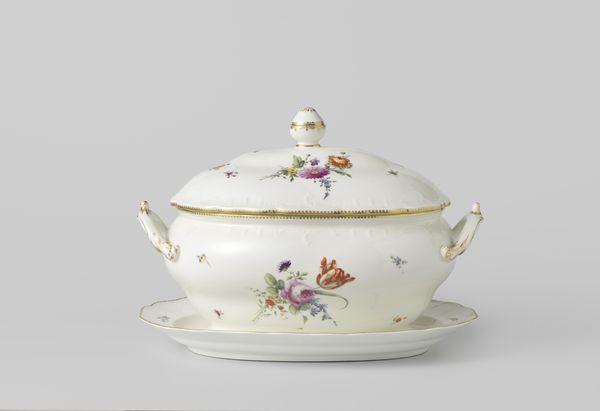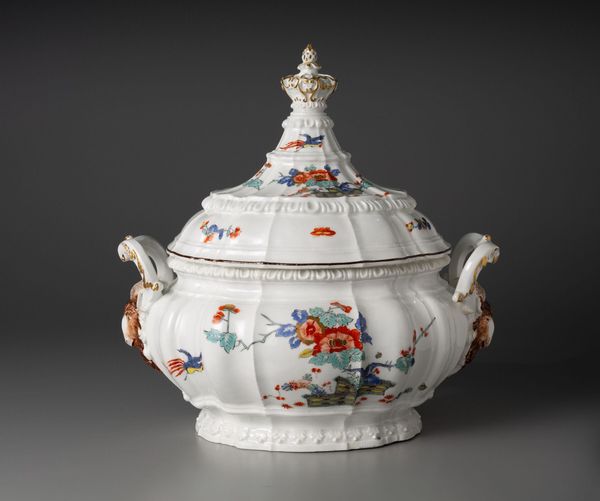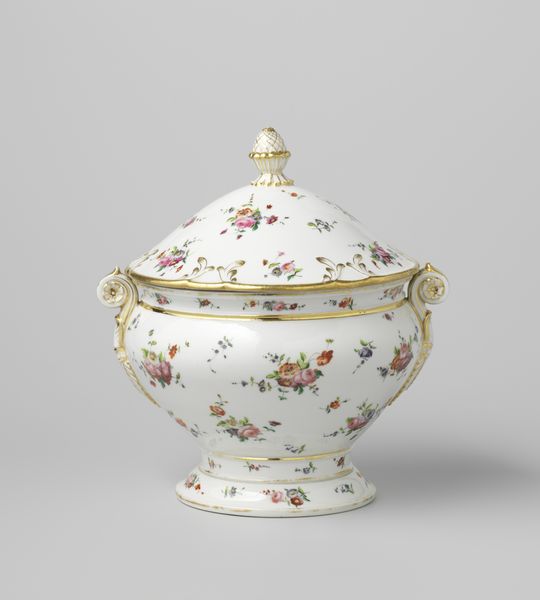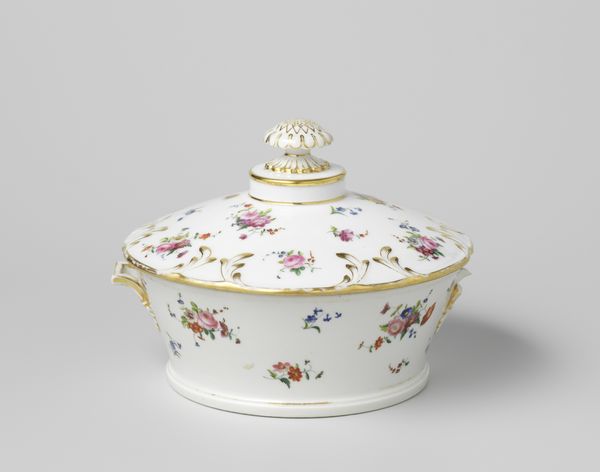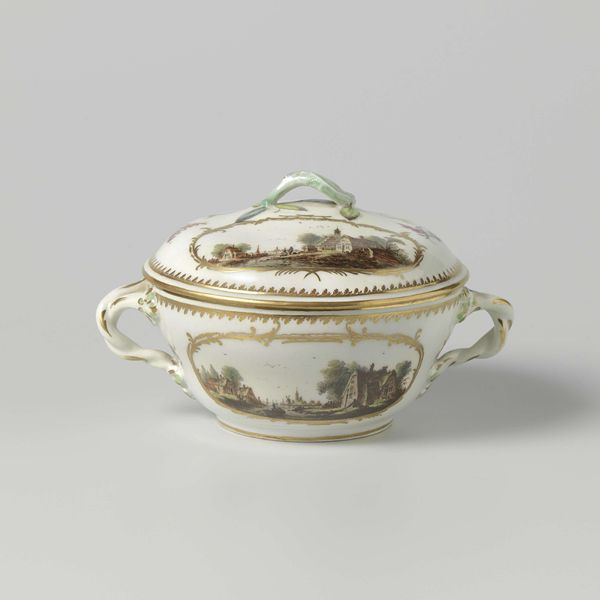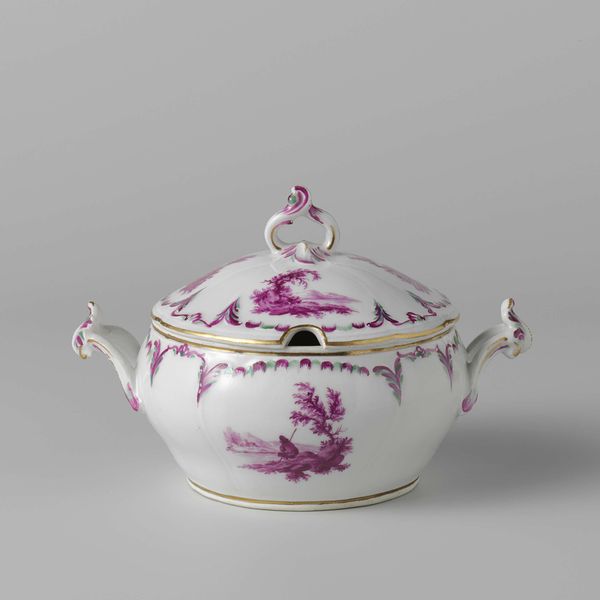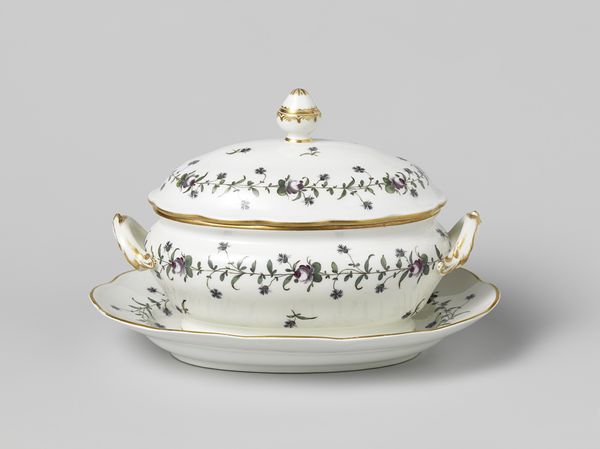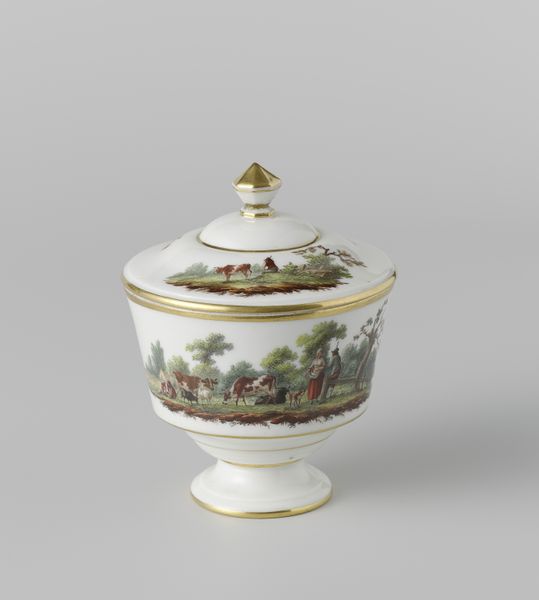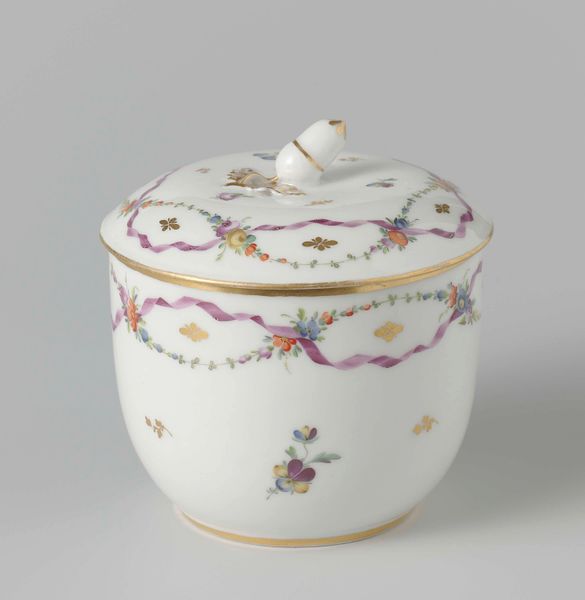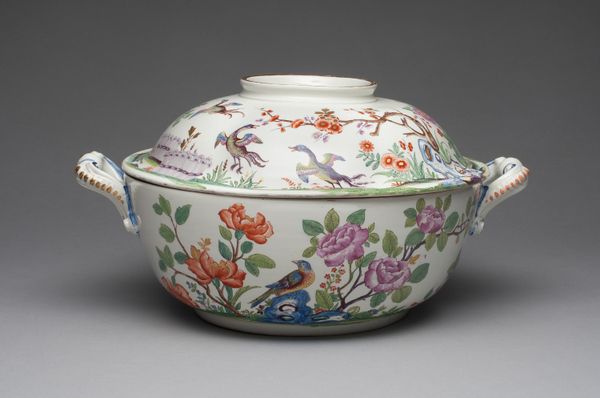
Deksel van terrine, beschilderd met vogels en strooibloemen 1774 - 1784
0:00
0:00
loosdrecht
Rijksmuseum
Dimensions: height 10 cm, diameter 22.9 cm
Copyright: Rijks Museum: Open Domain
Editor: This is a ceramic tureen lid from between 1774 and 1784, made in the Loosdrecht manufactory. I find the decoration charming – the little birds perched on branches are so delicate. What can you tell me about the imagery? Curator: The birds are very evocative, aren’t they? For me, the power of images like these is that they tell us so much about what people valued and saw around them. Here, the bird becomes more than just a bird – it embodies the spirit of nature and freedom, a kind of arcadian ideal. Editor: That's interesting! I hadn’t really thought of it as representing an ideal. How much would the symbolism behind them mean to the people at the time? Curator: I think that for the elite who would have used objects like this, images of birds were often closely tied to notions of status. Keeping exotic birds was fashionable and visually linking those qualities of beauty to their surroundings gave added prestige. Beyond that, you can read them as representing spring, joy and even romantic love – layers upon layers of cultural meaning! Editor: So the motifs become symbols of broader social and cultural values. Would the flowers fit that reading too? Curator: Exactly! The "strooibloemen" or scattered flowers were another popular decorative device at the time, suggestive of idealized rural scenes. Think about it: why choose these specific images and not others? It's a loaded decision! Editor: It is really interesting to understand how much significance something like a tureen could carry at the time. Thanks for pointing that out. Curator: My pleasure. Seeing the world through their symbolic language definitely enriches the piece.
Comments
No comments
Be the first to comment and join the conversation on the ultimate creative platform.
